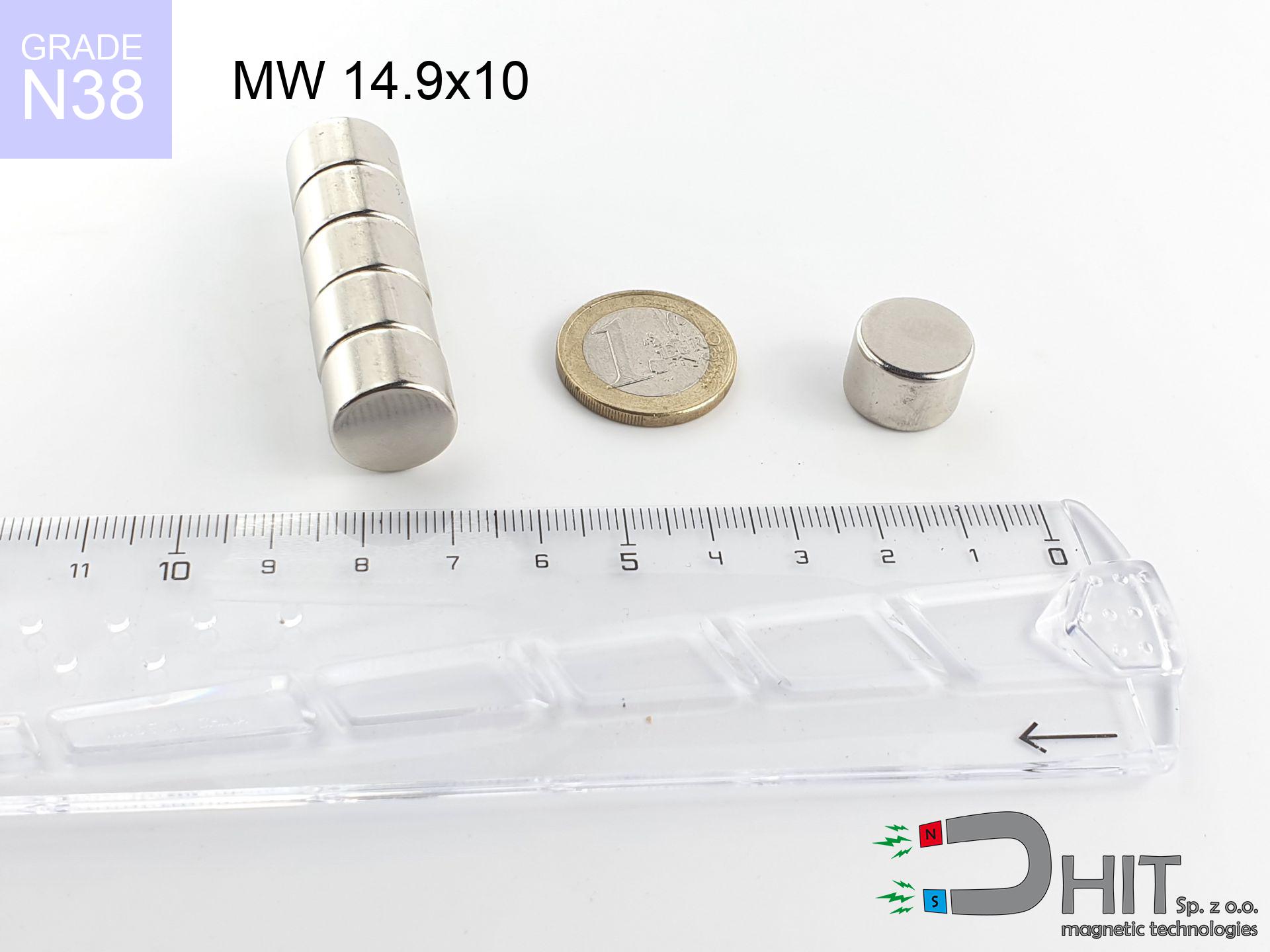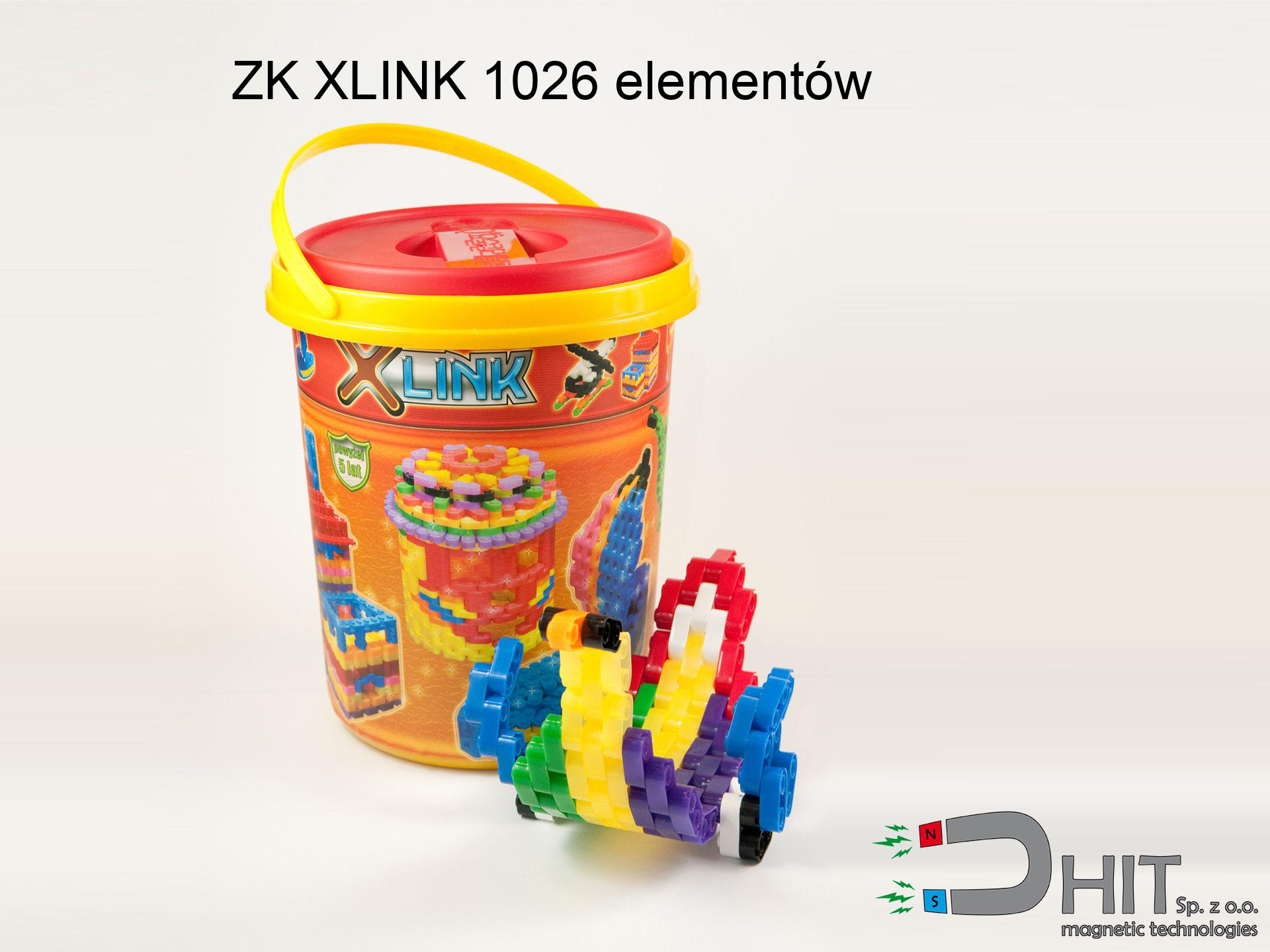SM 32x425 [2xM8] / N52 - magnetic separator
magnetic separator
Catalog no 130464
GTIN/EAN: 5906301813354
Diameter Ø
32 mm [±1 mm]
Height
425 mm [±1 mm]
Weight
2353 g
Magnetic Flux
~ 10 000 Gauss [±5%]
1340.70 ZŁ with VAT / pcs + price for transport
1090.00 ZŁ net + 23% VAT / pcs
bulk discounts:
Need more?
Give us a call
+48 888 99 98 98
or drop us a message via
contact form
through our site.
Specifications and form of neodymium magnets can be verified with our
magnetic mass calculator.
Orders placed before 14:00 will be shipped the same business day.
Technical details - SM 32x425 [2xM8] / N52 - magnetic separator
Specification / characteristics - SM 32x425 [2xM8] / N52 - magnetic separator
| properties | values |
|---|---|
| Cat. no. | 130464 |
| GTIN/EAN | 5906301813354 |
| Production/Distribution | Dhit sp. z o.o. |
| Country of origin | Poland / China / Germany |
| Customs code | 85059029 |
| Diameter Ø | 32 mm [±1 mm] |
| Height | 425 mm [±1 mm] |
| Weight | 2353 g |
| Material Type | Stainless steel AISI 304 / A2 |
| Magnetic Flux | ~ 10 000 Gauss [±5%] |
| Size/Mount Quantity | 2xM8 |
| Polarity | circumferential - 16 poles |
| Casing Tube Thickness | 1 mm |
| Manufacturing Tolerance | ±1 mm |
Magnetic properties of material N52
| properties | values | units |
|---|---|---|
| remenance Br [min. - max.] ? | 14.2-14.7 | kGs |
| remenance Br [min. - max.] ? | 1420-1470 | mT |
| coercivity bHc ? | 10.8-12.5 | kOe |
| coercivity bHc ? | 860-995 | kA/m |
| actual internal force iHc | ≥ 12 | kOe |
| actual internal force iHc | ≥ 955 | kA/m |
| energy density [min. - max.] ? | 48-53 | BH max MGOe |
| energy density [min. - max.] ? | 380-422 | BH max KJ/m |
| max. temperature ? | ≤ 80 | °C |
Physical properties of sintered neodymium magnets Nd2Fe14B at 20°C
| properties | values | units |
|---|---|---|
| Vickers hardness | ≥550 | Hv |
| Density | ≥7.4 | g/cm3 |
| Curie Temperature TC | 312 - 380 | °C |
| Curie Temperature TF | 593 - 716 | °F |
| Specific resistance | 150 | μΩ⋅cm |
| Bending strength | 250 | MPa |
| Compressive strength | 1000~1100 | MPa |
| Thermal expansion parallel (∥) to orientation (M) | (3-4) x 10-6 | °C-1 |
| Thermal expansion perpendicular (⊥) to orientation (M) | -(1-3) x 10-6 | °C-1 |
| Young's modulus | 1.7 x 104 | kg/mm² |
Table 1: Rod construction
SM 32x425 [2xM8] / N52
| Parameter | Value | Description / Unit |
|---|---|---|
| Diameter (Ø) | 32 | mm |
| Total length | 425 | mm (L) |
| Active length | 389 | mm |
| Section count | 16 | modules |
| Dead zone | 36 | mm (2x 18mm starter) |
| Weight (est.) | ~2598 | g |
| Active area | 391 | cm² (Area) |
| Housing material | AISI 304 | 1.4301 (Inox) |
| Surface finish | Ra < 0.8 µm | Polished |
| Temp. class | 80°C | Standard (N) |
| Force loss (at max °C) | -12.8% | Reversible loss (physics) |
| Force (calculated) | 37 | kg (theor.) |
| Induction (surface) | ~9 500 | Gauss (Max) |
Chart 2: Field profile (16 sections)
Chart 3: Temperature performance
Elemental analysis
| iron (Fe) | 64% – 68% |
| neodymium (Nd) | 29% – 32% |
| boron (B) | 1.1% – 1.2% |
| dysprosium (Dy) | 0.5% – 2.0% |
| coating (Ni-Cu-Ni) | < 0.05% |
Environmental data
| recyclability (EoL) | 100% |
| recycled raw materials | ~10% (pre-cons) |
| carbon footprint | low / zredukowany |
| waste code (EWC) | 16 02 16 |
Other products
Pros as well as cons of rare earth magnets.
Pros
- They virtually do not lose power, because even after ten years the decline in efficiency is only ~1% (based on calculations),
- Magnets perfectly protect themselves against demagnetization caused by external fields,
- A magnet with a shiny nickel surface has an effective appearance,
- Magnetic induction on the working layer of the magnet turns out to be very high,
- Made from properly selected components, these magnets show impressive resistance to high heat, enabling them to function (depending on their shape) at temperatures up to 230°C and above...
- Thanks to versatility in designing and the capacity to customize to individual projects,
- Versatile presence in electronics industry – they are commonly used in data components, brushless drives, medical equipment, also technologically advanced constructions.
- Relatively small size with high pulling force – neodymium magnets offer impressive pulling force in small dimensions, which makes them useful in small systems
Limitations
- They are prone to damage upon too strong impacts. To avoid cracks, it is worth protecting magnets in special housings. Such protection not only shields the magnet but also increases its resistance to damage
- When exposed to high temperature, neodymium magnets suffer a drop in strength. Often, when the temperature exceeds 80°C, their power decreases (depending on the size, as well as shape of the magnet). For those who need magnets for extreme conditions, we offer [AH] versions withstanding up to 230°C
- They rust in a humid environment. For use outdoors we advise using waterproof magnets e.g. in rubber, plastic
- Due to limitations in producing threads and complicated forms in magnets, we propose using a housing - magnetic mount.
- Potential hazard resulting from small fragments of magnets pose a threat, in case of ingestion, which is particularly important in the aspect of protecting the youngest. Furthermore, tiny parts of these magnets can be problematic in diagnostics medical after entering the body.
- High unit price – neodymium magnets have a higher price than other types of magnets (e.g. ferrite), which can limit application in large quantities
Lifting parameters
Maximum lifting capacity of the magnet – what affects it?
- with the application of a yoke made of special test steel, guaranteeing maximum field concentration
- with a thickness minimum 10 mm
- with an ideally smooth contact surface
- without the slightest clearance between the magnet and steel
- during detachment in a direction perpendicular to the plane
- at temperature approx. 20 degrees Celsius
Practical aspects of lifting capacity – factors
- Distance – existence of foreign body (rust, dirt, gap) interrupts the magnetic circuit, which reduces capacity steeply (even by 50% at 0.5 mm).
- Force direction – declared lifting capacity refers to detachment vertically. When attempting to slide, the magnet holds much less (typically approx. 20-30% of maximum force).
- Metal thickness – the thinner the sheet, the weaker the hold. Magnetic flux penetrates through instead of converting into lifting capacity.
- Chemical composition of the base – mild steel gives the best results. Alloy admixtures lower magnetic permeability and holding force.
- Smoothness – full contact is possible only on polished steel. Any scratches and bumps create air cushions, weakening the magnet.
- Thermal environment – heating the magnet results in weakening of force. It is worth remembering the maximum operating temperature for a given model.
Holding force was tested on the plate surface of 20 mm thickness, when a perpendicular force was applied, in contrast under parallel forces the load capacity is reduced by as much as 5 times. Additionally, even a slight gap between the magnet and the plate decreases the load capacity.
H&S for magnets
Risk of cracking
Protect your eyes. Magnets can fracture upon violent connection, launching shards into the air. Eye protection is mandatory.
Swallowing risk
Always store magnets out of reach of children. Ingestion danger is significant, and the effects of magnets clamping inside the body are very dangerous.
Heat warning
Standard neodymium magnets (N-type) lose power when the temperature surpasses 80°C. This process is irreversible.
Conscious usage
Before use, check safety instructions. Uncontrolled attraction can break the magnet or hurt your hand. Be predictive.
Bodily injuries
Watch your fingers. Two large magnets will snap together instantly with a force of massive weight, crushing everything in their path. Exercise extreme caution!
Electronic devices
Do not bring magnets close to a wallet, computer, or screen. The magnetic field can permanently damage these devices and wipe information from cards.
Fire warning
Dust produced during cutting of magnets is flammable. Do not drill into magnets without proper cooling and knowledge.
Skin irritation risks
Warning for allergy sufferers: The Ni-Cu-Ni coating consists of nickel. If an allergic reaction occurs, cease handling magnets and wear gloves.
Danger to pacemakers
For implant holders: Strong magnetic fields affect medical devices. Keep at least 30 cm distance or ask another person to handle the magnets.
GPS and phone interference
A powerful magnetic field interferes with the functioning of compasses in smartphones and navigation systems. Maintain magnets near a smartphone to prevent damaging the sensors.

![Separation magnetic rod SM 32x425 [2xM8] / N52 Separation magnetic rod SM 32x425 [2xM8] / N52](https://cdn3.dhit.pl/graphics/banners/magnet.webp)
![SM 32x425 [2xM8] / N52 - magnetic separator](https://cdn3.dhit.pl/graphics/products/sm-32x425-2xm8-tas.jpg)

![SM 32x325 [2xM8] / N42 - magnetic separator SM 32x325 [2xM8] / N42 - magnetic separator](https://cdn3.dhit.pl/graphics/products/sm-32x325-2xm8-fog.jpg)



